Unveiling the Artistry of Wirework and Stringing in Beading and Jewelry Making
Introduction
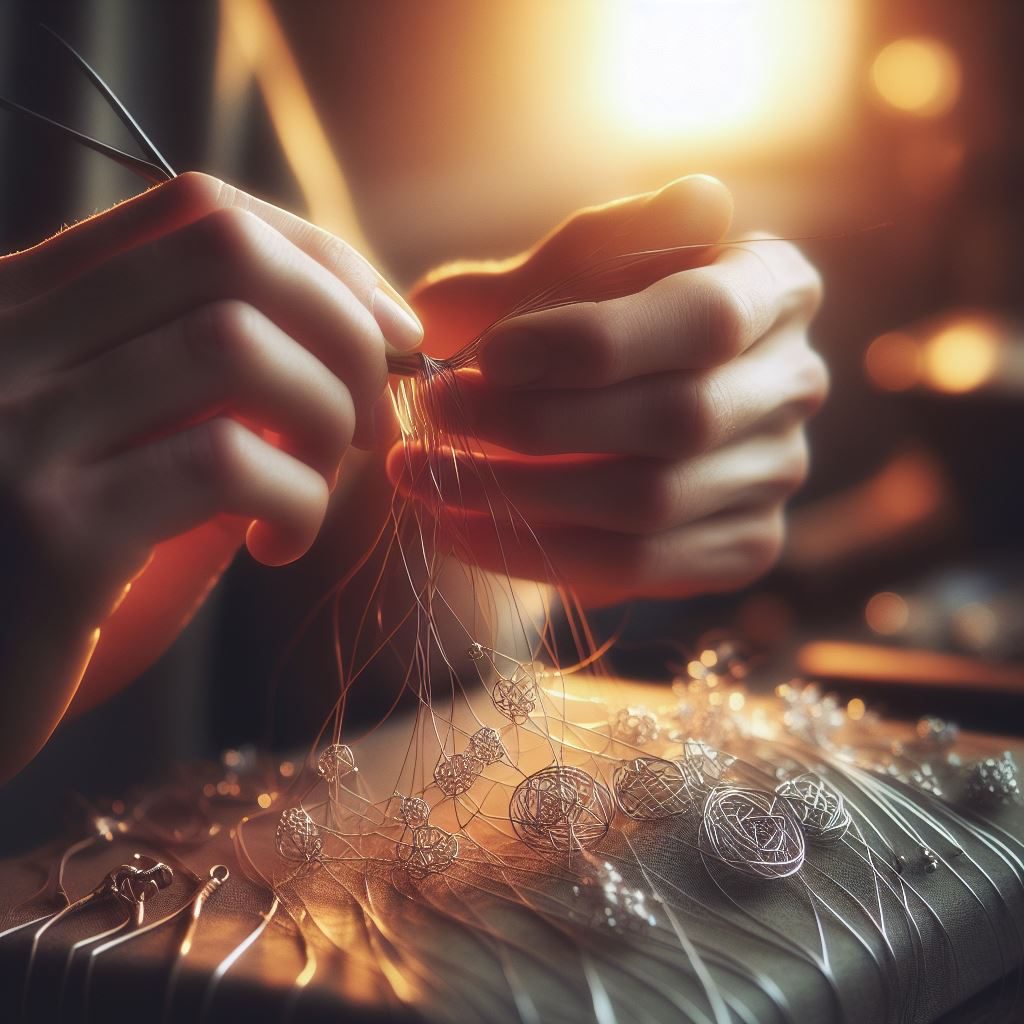
In the captivating world of beadwork and jewelry making, two fundamental techniques stand out: wirework and stringing. These versatile methods offer artisans endless possibilities for crafting exquisite pieces that reflect their creativity and style.
Wirework, characterized by its intricate twists, loops, and bends, allows artisans to sculpt stunning designs using various gauges and types of wire. On the other hand, stringing employs a diverse array of materials, and types.of.beads such as chevron.beads, Millifiori.beads, gemstones, and charms, threaded together to form elegant necklaces, bracelets, and more.
In this article, we delve into the essence of wirework and stringing, exploring their unique qualities, tools, and applications. Whether you’re a seasoned jewelry maker or a budding enthusiast, understanding these techniques lays the foundation for unleashing your artistic expression and crafting timeless treasures. Join us as we embark on a journey through the enchanting realms of wirework and stringing in the realm of beading and jewelry making.
The Significance of Wirework for Beading: A Brief Exploration
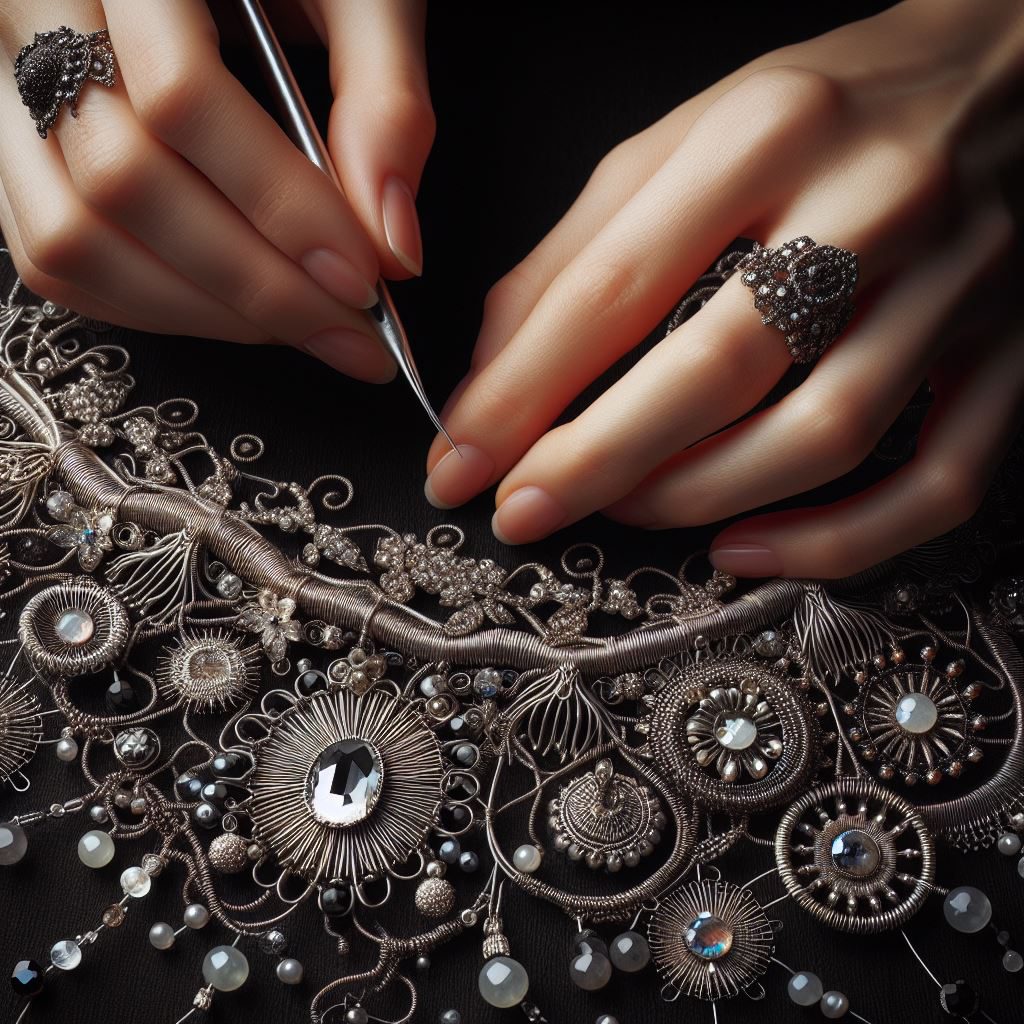
- Creative Versatility: Wirework offers endless possibilities for artistic expression, allowing artisans to sculpt intricate designs ranging from delicate filigree patterns to bold statement pieces.
- Structural Support: Wire serves as a sturdy framework for holding beads and gemstones in place, providing structural integrity to jewelry pieces and preventing them from losing their shape over time.
- Customization: With wirework, artisans can tailor their designs to fit specific preferences, incorporating personalized elements such as birthstones Kiffa.beads, initials, and unique motifs into their creations.
- Enhanced Texture and Dimension: By manipulating wires into various shapes and forms, artisans can add texture and dimension to their beading.pattern, designs, creating visually captivating jewelry that catches the eye and stimulates the senses.
- Skill Development: Mastering wirework techniques requires practice and precision, offering artisans an opportunity to hone their skills and expand their repertoire in the craft of beading and jewelry making.
- Timeless Appeal: Wirework has a timeless allure that transcends trends, making it a classic choice for creating heirloom quality pieces that stand the test of time and hold sentimental value for generations to come.
The Significance of Stringing in Beading: A PointbyPoint Exploration

- Versatility: Stringing allows for endless possibilities in design, accommodating various materials like beads, gemstones, pearls, and charms.
- Accessibility: It is a beginner friendly technique, requiring minimal tools and skills, making it accessible to novices and experienced artisans alike.
- Creativity: Stringing fosters creativity by enabling artisans to experiment with different bead shapes, sizes, colors, and patterns to create unique jewelry pieces.
- Customization: It offers the flexibility to tailor designs to suit individual preferences and styles, whether it’s a simple bracelet or an elaborate multistrand necklace.
- Affordability: Compared to other techniques, stringing often requires fewer materials, making it a cost effective option for jewelry makers on a budget.
- Time Efficiency: Stringing projects can be completed relatively quickly, allowing artisans to produce multiple pieces in a shorter time frame compared to more intricate techniques.
- Wearability: Stringing produces lightweight and comfortable jewelry pieces that are perfect for everyday wear, catering to a wide range of tastes and occasions.
- Marketability: Stringing jewelry appeals to a broad audience, making it popular among consumers seeking stylish, affordable, and versatile accessories.
Exploring the Artistry: A Guide to Different Techniques of Wirework
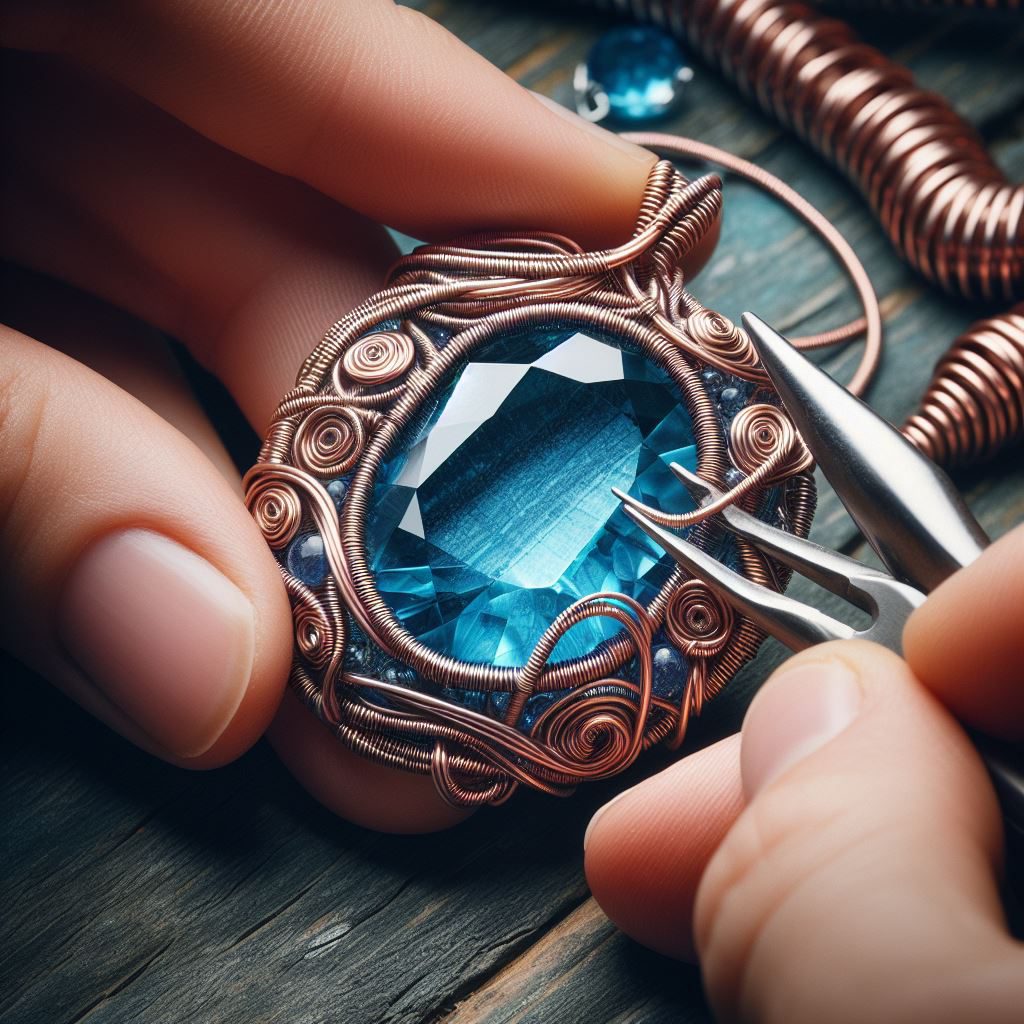
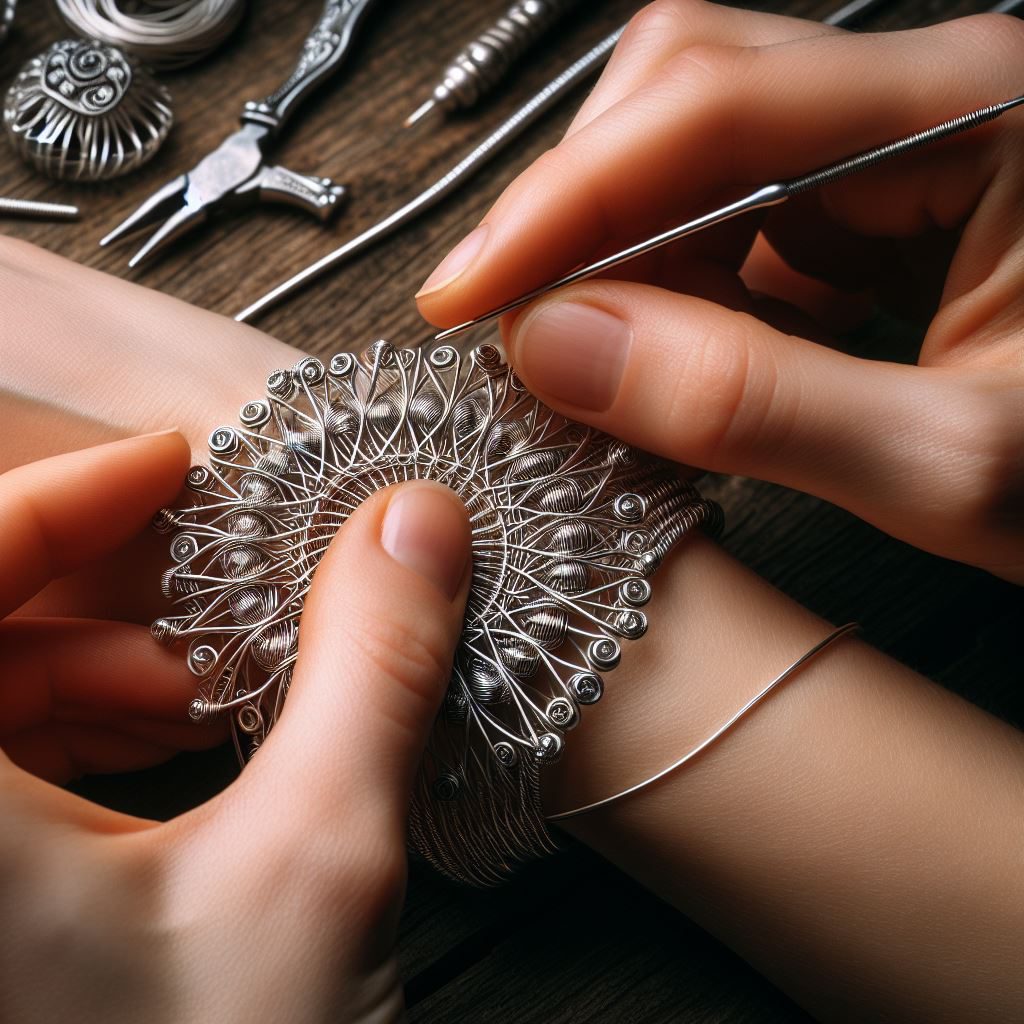
Wirework, an ancient craft dating back centuries, has evolved into a versatile and captivating art form in contemporary jewelry making. From delicate filigree to bold sculptural pieces, wirework offers endless possibilities for artisans to express their creativity. Let’s delve into the diverse techniques of wirework that have captivated jewelry makers worldwide:
- Wire.Wrapping: One of the most popular wirework techniques, wire wrapping involves securing and shaping wire around beads, gemstones, or focal components. Variations include simple loops, wrapped loops, and intricate coil designs. Ideal for creating pendants, earrings, and elaborate wire wrapped rings.
- Wire Weaving: This technique involves interlacing wires to create intricate patterns and textures. Weaving can be done using single or multiple wires, with variations like basket weave, chevron weave, and viking knit. Commonly used in creating cuffs, bracelets, and statement necklaces.
- Wire Sculpting: Wire sculpting entails manipulating wire to form three dimensional shapes and figures. Artisans use techniques such as bending, twisting, and coiling to create sculptural elements. Often seen in intricate wire animals, botanical designs, and abstract sculptures.
- Wire Coiling: Coiling involves wrapping wire around a mandrel or cylindrical object to create uniform coils. Coils can be used as decorative elements, connectors, or focal points in jewelry designs. Techniques include basic coiling, spiral coils, and nested coils.
- Wire Embroidery: Inspired by traditional embroidery techniques, wire embroidery involves stitching wire onto a base material. Artisans use techniques like couching, weaving, and stitching to embellish fabric or metal surfaces. Commonly used in creating elaborate brooches, hair accessories, and embellished cuffs.
- Wire Filigree: Filigree is characterized by delicate wirework patterns formed by twisting and soldering thin wires. Artisans create intricate lacelike designs often incorporating beads, gemstones, or enamel accents. Traditionally used in creating earrings, pendants, and ornamental pieces.
Distinguishing Wirework from Stringing: Exploring the Contrasts in Jewelry Making

In the captivating world of jewelry making, two fundamental techniques, wirework and stringing, stand out as pillars of creativity. While both methods contribute to the beauty and intricacy of jewelry pieces, they diverge significantly in their approaches and applications. Let’s unravel the differences between wirework and stringing to gain a deeper understanding of their unique characteristics:
Materials and Mediums
Wirework primarily utilizes metal wires, such as copper, sterling silver, or gold filled wire, as the primary medium. These wires are manipulated, shaped, and sculpted to form intricate designs and structures.
Stringing, on the other hand, involves threading beads, gemstones, or other components onto a flexible material, such as beading cord, or thread. This technique showcases the beauty of beads and focuses on their arrangement and composition.
Techniques and Approaches
Wirework encompasses a wide range of techniques, including wire wrapping, weaving, coiling, and sculpting. Artisans employ various tools and skills to bend, twist, and shape wire into intricate patterns, sculptures, and embellishments.
Stringing, meanwhile, relies on simpler techniques such as basic bead stringing, knotting, macramé, and loom weaving. These techniques emphasize the arrangement and composition of beads, focusing on creating visually appealing patterns and textures.
Design Flexibility and Complexity
Wirework offers unparalleled design flexibility, allowing artisans to create elaborate and three dimensional structures. From delicate filigree designs to bold sculptural pieces, wirework enables artisans to push the boundaries of creativity and craftsmanship.
Stringing, while more straightforward in technique, offers its own realm of design possibilities. Artisans can experiment with bead sizes, shapes, colors, and patterns to create unique compositions. While stringing may not offer the same level of intricacy as wirework, it excels in its versatility and adaptability to different styles and aesthetics.
Durability and Wearability
Wirework jewelry tends to be more durable and resilient due to the sturdiness of metal wires. Wire Wrapped components and structures offer stability and longevity, making them suitable for everyday wear.
Stringing jewelry, while generally durable, may require occasional maintenance, especially if the stringing material is prone to wear and tear. Proper care and storage are essential to ensure the longevity of stringing jewelry pieces.
Navigating the Choice: Factors to Consider when Choosing Between Wirework and Stringing in Jewelry Making
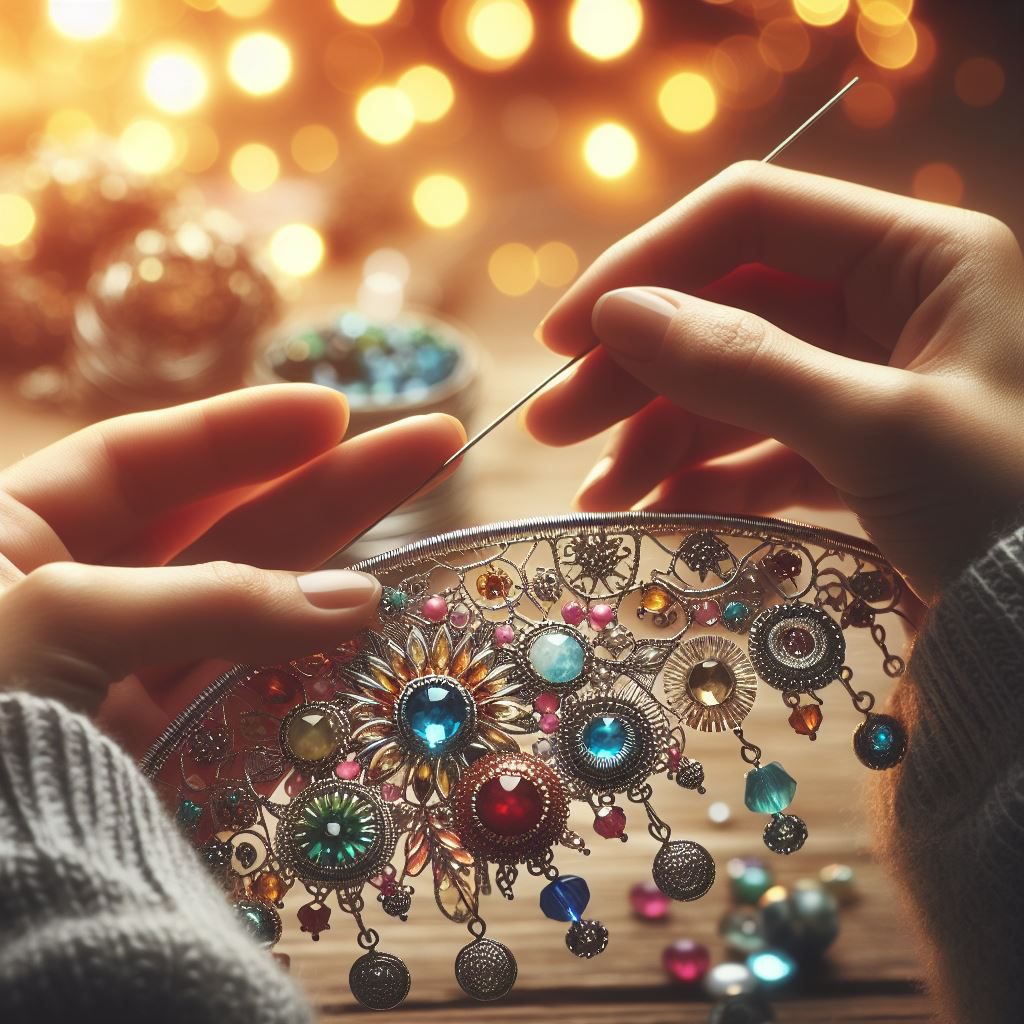
In the dynamic world of jewelry making, selecting the right technique can significantly impact the outcome of your creations. When faced with the decision between wirework and stringing, artisans must carefully weigh various factors to determine which method best suits their design goals, skill level, and preferences. Let’s explore the key considerations that can guide this decision making process:
Design Complexity
Consider the complexity of your desired design. Wirework techniques, such as wire wrapping and sculpting, lend themselves well to intricate and three dimensional designs. If you envision elaborate wire structures or detailed embellishments, wirework may be the ideal choice.
Conversely, if your design leans towards simplicity or focuses on showcasing the beauty of beads, stringing techniques offer a more straightforward approach. Basic bead stringing or knotting techniques can effectively highlight the colors, shapes, and textures of your beads without overwhelming the design.
Skill Level
Assess your proficiency and comfort level with each technique. Wirework often requires a higher degree of dexterity, precision, and knowledge of tools. If you’re new to jewelry making or prefer a technique that’s easier to master, stringing may be a more suitable starting point.
However, don’t let skill level deter you from exploring wirework if you’re willing to invest time and practice. With patience and perseverance, you can gradually develop the skills necessary to excel in wirework techniques.
Tools and Materials
Take stock of the tools and materials you have available or are willing to invest in. Wirework typically requires specialized tools such as wire cutters, pliers, mandrels, and hammers. Acquiring these tools adds to the initial investment but offers versatility and precision in shaping and manipulating wire.
Stringing, on the other hand, requires minimal tools a pair of scissors and a beading needle or thread are often sufficient. The simplicity of stringing tools makes it more accessible and cost effective for beginners or those with limited resources.
Durability and Wearability
Consider the durability and wearability of the final piece. Wirework jewelry, with its sturdy metal components, tends to be more durable and resilient to everyday wear and tear. Wire Wrapped structures and connections offer stability and longevity, making them suitable for pieces intended for frequent wear.
Stringing jewelry, while generally durable, may require periodic maintenance, especially if the stringing material is susceptible to stretching or fraying. Be mindful of the choice of stringing material and ensure proper care and storage to prolong the lifespan of the piece.
Personal Preference and Aesthetic
Ultimately, let your personal style and aesthetic preferences guide your decision. Consider the overall look and feel you want to achieve with your jewelry piece. Are you drawn to the intricate details and sculptural elements of wirework, or do you prefer the simplicity and elegance of stringing?
Experiment with both techniques to see which resonates more with your creative vision. Don’t be afraid to combine elements of wirework and stringing in your designs to create unique and visually captivating pieces that reflect your individuality.
Conclusion
In conclusion, the choice between wirework and stringing in jewelry making ultimately comes down to personal preference, style, and the specific design requirements of each piece. Wirework offers versatility, allowing for intricate designs and customizable shapes, while stringing provides simplicity and ease of assembly, ideal for creating elegant and minimalist designs. Both techniques have their strengths and can be combined creatively to achieve stunning results. Whether you’re drawn to the precision of wire wrapping or the fluidity of stringing, experimenting with both methods can expand your skills and open up a world of possibilities in your jewelry crafting journey. Ultimately, the most important aspect is to enjoy the process and let your creativity guide you in creating beautiful and unique pieces of wearable art.

Recent Comments